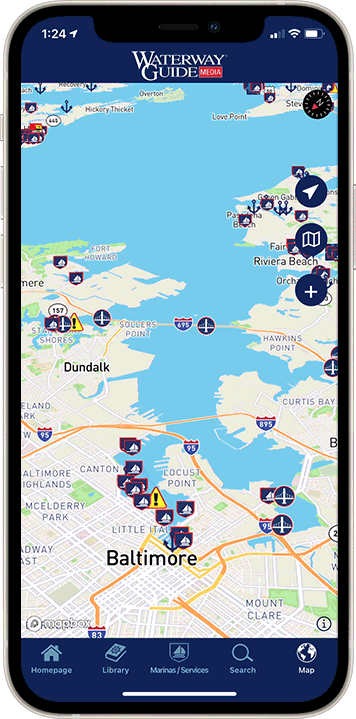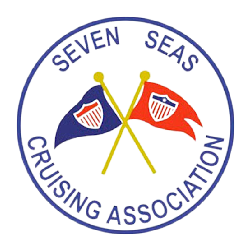 Waterway Guide Media has forged a partnership intended to advance our company's dedication to, and the Coast Guard Auxiliary's mission of, promoting safe boating. Through this shared vision and effort, we are working together on targeted communications, and access to training materials and other assets. The breadth and depth of the USCG Auxiliary mission and its importance to boaters and communities across the U.S. is worth exploring as the organization enters its 84st year.
Waterway Guide Media has forged a partnership intended to advance our company's dedication to, and the Coast Guard Auxiliary's mission of, promoting safe boating. Through this shared vision and effort, we are working together on targeted communications, and access to training materials and other assets. The breadth and depth of the USCG Auxiliary mission and its importance to boaters and communities across the U.S. is worth exploring as the organization enters its 84st year.
A Special Force Endures: The US Coast Guard Auxiliary
What started in 1939 as a response to threats from events unfolding in Europe has persevered as an integral component of the US Coast Guard, the nation's maritime first responder. This is a unique and compelling story of volunteerism, citizen soldiers and commitment carried out today by over 26,000 men and women of the USCG Auxiliary.
Auxiliarists are a force multiplier for active duty USCG personnel. We've seen them in their vessels, waved at them while underway and invited them aboard for courtesy inspections for that coveted sticker that says, "My boat is squared away." They give their time, talents and resources to promote and improve recreational boating safety (RBS) and support Coast Guard operational, administrative and logistical requirements. But what else are Auxiliarists working toward?
Here are some numbers provided by Vincent Pica, a Commodore from the First District, Southern Region (D1SR), USCG. He said, "We don't get paid. Every hour we do something that active duty can do we free up their time and resources for other missions. The Auxiliary saved the Office of Management and Budget (taxpayers) $240 million in the prior year. Every day over 10,800 hours are logged by Auxiliary volunteers performing on-water boating safety patrol, while 11 distressed boaters are saved and 548 vessel safety checks are conducted. As the Uniformed Volunteer Branch of the Coast Guard, members train to USCG standards and serve in every mission except law enforcement."
The years leading up to WWII were a different time for this country, and the world. The Nazi U-Boat threat along the Atlantic Coast was real and the Coast Guard's Commandant saw war on the horizon. He knew the active duty component needed expanding, so in September 1939 Congress passed the Coast Guard Reserve Act. The result was that over 50,000 Auxiliary members served in the Volunteer Reserve during WWII. That tradition continues today with trained volunteers serving beside military personnel.
The USCG Auxiliary cannot undertake any action that requires a weapon or law enforcement authority. However, seven of the eleven congressionally mandated tasks of the USCG can be performed, which frees active duty to pursue higher content tasks. Auxiliary conducts search and rescue, maritime – and aviation – observation missions, non-regulatory vessel examinations and boating safety education, among others.
Pica explained, "Some other examples include when a USCG station runs low on its fuel budget they can call the Auxiliary for assistance and we will take active personnel out for training or patrol in our vessels. We put cooks on USCG ships, which frees up active-duty personnel to conduct other important tasks. We also assist in our private sector areas of expertise when needed."
The Auxiliary has evolved with membership and participation adjusting to the times. When asked what the greatest challenges are today for the Auxiliary, Pica said, "We've been described as the minutemen of the 21st century. That's a hard task to live up to for young persons who have other duties versus older personnel who have more discretionary options. We are adapting our tasking to make it easier for younger members to feel that their efforts are worthy. I came into the Auxiliary following the September 11, 2001 attacks. As we move away from 9/11 some patriotic motivation has waned. Our leadership is always focused on retention and recruitment."
From the mid-1990s to the present the operational tempo of the USCG has increased dramatically due to drug enforcement, security and associated tasks. The USCG continues to depend on the work of the Auxiliary with 26,000 volunteers supporting 56,000+ active, reserve and civilian personnel across all approved areas of responsibility.
Pica said that attracting new volunteers to the Auxiliary is vital to the effectiveness of the USCG. "Many of us have an urge to serve. Whatever you may call it, there are forces at work aimed at destroying our way of life. The opportunity for me is that I can serve the United States on my own terms. I get to contribute to the effectiveness of the USCG's missions and from that I enjoy personal growth. My sense of satisfaction is real. Auxiliarists don't need to be boaters. There are 16 categories of duties."
As one of eight uniformed services the USCG conducts on an average day 45 search and rescue missions, saves 10 lives, seizes over 800 pounds of illegal drugs, investigates 35 pollution incidents and facilitates the movement of $8.7B worth of goods and commodities. In many instances, Auxiliarists are alongside their active duty counterparts performing their role as defined in the organization's mission statement as, "The best trained most valued maritime volunteer organization in the world – highly effective during normal operations and ready for emergencies."
Interesting Facts:
- The number one cause of boating accidents is alcohol.
- Drowning from a boating accident is caused by not wearing a life jacket. 16 people go overboard with a lifejacket on, 15 come out alive. 16 go overboard without a lifejacket, 15 die.
- Your paddle craft (SUP, canoe or kayak) should have a label on it, "If Found Call ______" When or if it floats away from a dock during a high wind or water, unnecessary search and rescue often is initiated looking for a victim. The call number will assist in confirming the owner's status."
- Training requirements for Auxiliarists include 10-11 courses every 5 years.
- USCG personnel and Auxiliarists operate under the Department of Homeland Security during peacetime but operational control may be transferred to the U.S. Navy if necessary.












